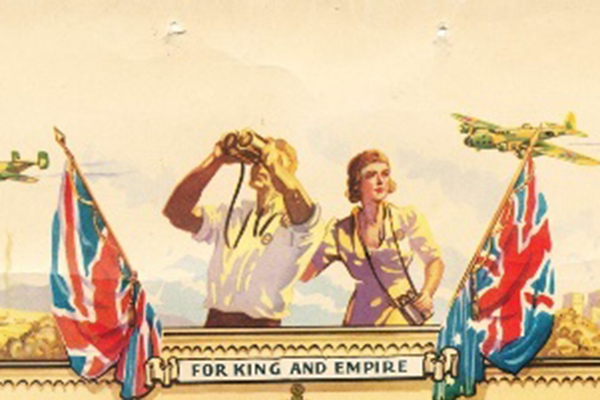How the war inspired me and my family to fly
It’s World War II and the Japanese are “island hopping” towards Australia. So, authorities establish observation posts to monitor all aircraft movements. A small shed near the water tower on Avondale’s Lake Macquarie—staffed by volunteers who are mostly wives of college and Sanitarium Health Food Company factory employees, including my mother, Daisy—serves as one such post.
I visit the shed a couple of times when Mum takes her four-hour shifts. It’s sparsely furnished with binoculars, two picture rolls (one with allied aircraft, the other with enemy aircraft), a small table, a chair and a telephone with a direct line to Sydney.
The “spotters” report any aircraft they see—I watch Tiger Moths and Chipmunks fly overhead—estimating type, altitude and direction of flight. Responses from Sydney can be humorous, particularly to calls from new recruits. “What do you mean, ’It’s an odd-looking plane?’” “You say it’s thousands of feet up, could you be a little more specific?” “Do you have any concept of where north, south, east and west might be?”
One morning, our Avondale Primary School teacher calls us to attention and announces, “The war is over and you can all go home.” Months later, the Royal Australian Air Force base at Rathmines offers reward flights in a Catalina PBY to thank the spotters for their service. Cars in Cooranbong are few in number and petrol is rationed, so my father, Bill, the manager of the factory, takes the Fargo. The spotters—about 25 in all—sit in the bed of the truck. They’re excited: for most, this will be their first flight.
Our Catalina is floating in Kilaben Bay. The first group is ushered into a patrol boat (shades of PT109) and delivered to the blister window on the side of the plane. I’m surprised to find no seats so sit on coils of greasy yellow rope. The engines start—the noise is deafening—and the propellers force spray over the windows. Moments later, we’re airborne.
I climb through a bulkhead to find two airmen in uniform on high seats above me. The 1st Officer reaches down and lifts me up on his knee so I can see out the front. We fly over Lake Macquarie, Morisset, the Avondale Estate. The copilot asks who owns the factory. I give him a seven-year-old answer: “The people who built it!”
This experience, reinforced by reading Biggles books, kindles a desire to become a pilot. “I want to be a flying doctor,” I tell my father many years later. “Sounds good,” he says, “as long as you do the doctor part first.”
The Rathmines Memorial Park hosts a march and service each Anzac Day. I’ve attended several to honour those who served. It came at a cost: 66 of 168 Catalinas were lost along with 329 airmen.
Our family has been blessed with safe, useful and enjoyable flying over many years, and we thank God for it. As I accumulate more than 3000 hours of Pilot in Command time, I’m grateful not only for the spotters but also for the Rathmines Catalinas, whose pilots and support crew deserve our respect for their service to Australia in our time of need.
Image: Spotter certificate earned by Gus Middleton at the Avondale Spotter Hut. Credit: Alan Fisher.
Share

